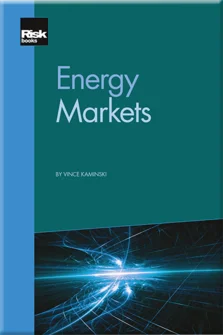Energy Trading and Marketing: The Macro View
Energy Markets: Introduction
Energy Trading and Marketing: The Macro View
Energy Trading: The Organisation
Weather Information in Energy Trading
Energy Markets: The Instruments
Energy Markets: Structured Transactions
Energy Markets: Exchanges
Energy Markets: Market Participants and Regulatory Developments
Natural Gas: Upstream
Non-conventional Natural Gas
Natural Gas Transportation and Storage
US Natural Gas Markets
International Natural Gas Markets
Oil Markets: Properties, Production and Reserves
Non-Conventional Oil
Oil Processing
Oil Transportation and Storage
Oil Pricing
Transactions in the Oil Markets
Electricity: The Basics
Power Generation
Transmission, Loads and Power Pools
Analytical Tools
Electricity Markets Transactions
Manipulation and Gaming of Energy Markets
Emission Markets
Coal Markets
Conclusions
In this chapter we shall elaborate further on the central message of this book, signalled in the Introduction: markets for different energy commodities represent an integrated, intertwined system, with connections between each component of that constantly changing system. The differences between physical and chemical properties of different commodities and differences in production and transportation technology do not change the basic fact that energies traded in the markets share many common features – and that these markets can be analysed using identical or similar tools. Interdependencies between different parts of the energy complex have profound implications for price formation and price dynamics. One cannot successfully trade one type of energy without paying attention to the developments related to other parts of the system. This translates, in turn, into the principles underlying the procedures of energy trading organisations, the design of trading floors, required skills and data flows.
We will start by discussing the common features of different energy markets. These commonalities explain why it is possible to uproot a natural gas trader and move them to an
Copyright Infopro Digital Limited. All rights reserved.
As outlined in our terms and conditions, https://www.infopro-digital.com/terms-and-conditions/subscriptions/ (point 2.4), printing is limited to a single copy.
If you would like to purchase additional rights please email info@risk.net
Copyright Infopro Digital Limited. All rights reserved.
You may share this content using our article tools. As outlined in our terms and conditions, https://www.infopro-digital.com/terms-and-conditions/subscriptions/ (clause 2.4), an Authorised User may only make one copy of the materials for their own personal use. You must also comply with the restrictions in clause 2.5.
If you would like to purchase additional rights please email info@risk.net











